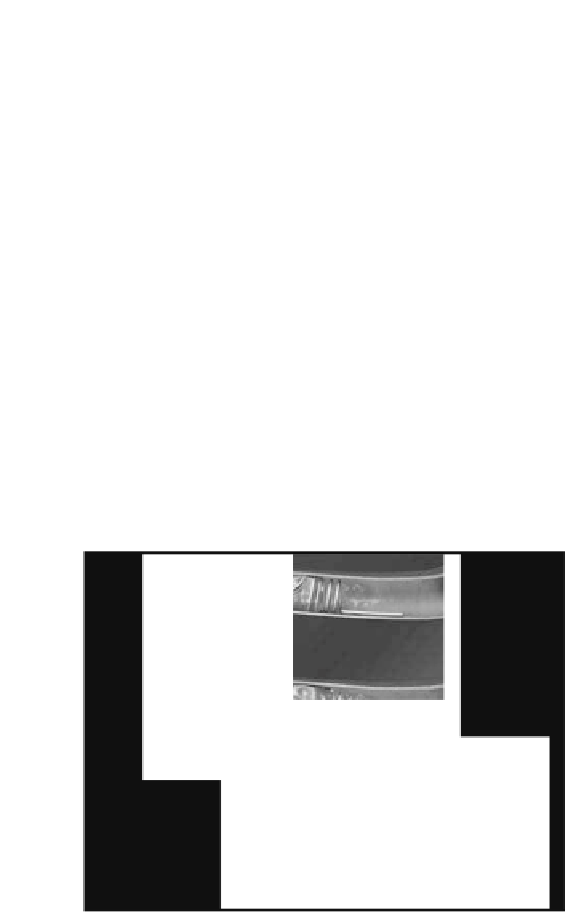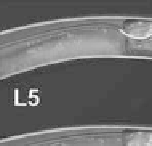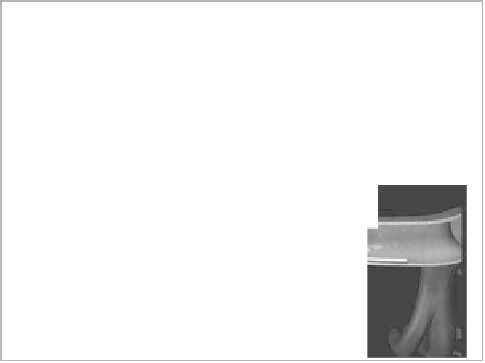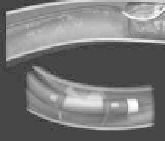Biomedical Engineering Reference
In-Depth Information
captured interest because it gives an example of external adaptation
and effectiveness [48]. Good results of revascularization cases were
reported in [49] using a system named Penumbra that relies on a
specialized catheter and wire for treating cerebral artery occlusion
by destruction and aspiration of thrombus (Fig 2.15). Figures 2.16
and 2.17 show a patient with Lt.MCA superior trunk occlusion.
Figure 2.16a shows a 3D-CTA image of the obstruction in the Lt. MCA
superior trunk. Cerebral blood low (CBF) reduction at part of the Lt.
MCA superior trunk area, duration of mean transit time (MTT) and
time to peak (TTP), cerebral blood volume (CBV) and Penumbra are
visualized using CT Perfusion (Fig. 2.16b-e). Vascular reconstruction
by thrombus resection (Fig. 2.17) eliminates right hemiparesis and
aphasia symptoms. From basilar artery through the left vertebral
artery a near occlusion and thrombus with blood vessel are visible
in Fig. 2.18. After the suction of the thrombus, a stent was deployed
from basilar artery through the left vertebral artery (Fig. 2.18b).
After the treatment the blood low to the brain was reestablished
(Fig. 2.18c).
a)
b)
c)
Figure 2.14
Merci retrieval system presented in (mechanical thrombectomy
for acute ischemic stroke: inal results of the Multi MERCI trial.
Stroke
, April 2008; 39(4):1205-1212). (a, b) A thrombus is
caught using a specialized coiled wire that is inserted into
the obstructed section. (c) After the blood low is temporary
stopped by inlating the balloon installed around the guiding
catheter; the thrombus is suctioned to the inside of the guiding
catheter for its extraction [48].
























































Search WWH ::

Custom Search